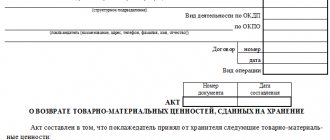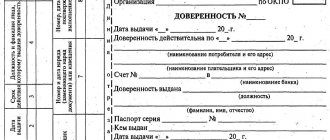Storing goods and other valuables in a warehouse assumes that their quality, condition and overall value will not change in the direction of deterioration, unless we are talking about natural aging and loss of certain properties. Renting a warehouse as part of the complex allows you to organize the placement of inventory and materials in specially adapted premises, but for their complete safety, items and goods must be properly prepared for long-term storage on shelves and racks.
Storage by groups of goods in warehouses is organized taking into account the consumer category, the principles of product proximity and the rules established by the specifications for each product or group. There are general recommendations regarding large categories of goods and materials for commodity or user purposes. Everything that is stored in a warehouse can be classified into one of the large groups:
- items, products, materials and other products for sale, transportation or use in production;
- shoes, clothing, items for everyday use placed in temporary storage;
- construction materials, auto parts;
- household appliances, electronics, furniture and household items;
- machinery, equipment and machinery in temporary storage.
Separately and according to particularly strict rules, the placement of food products, pharmaceutical and chemical products is organized. The principles of commodity proximity and the procedure for organizing storage for these categories should be described separately and in detail.
Inventory accounting
Like all assets, inventories must be accounted for, and for this purpose several balance sheet accounts are provided and a number of unified primary documents and synthetic accounting registers have been developed. In the balance sheet, inventory items are accumulated in the second section “Current assets”. It reflects the balance of inventories in monetary terms at the beginning and end of the reporting period.
Information about the availability of inventories in the balance sheet is the final result of the accounting work carried out, information about the dynamics of the movement of materials is reflected in primary documents and generalized registers - order journals and materials accounting sheets.
Warehouse Regulations
I APPROVED _____________________________________ (name of the position of the head of the enterprise) ____________________________________ (Full name, signature) “____”_____________ _____ g.
REGULATIONS on the warehouse 1. GENERAL PROVISIONS 1.1. The warehouse is a structural unit of the logistics department of the enterprise and reports directly to ____________________________.
1.2. The warehouse was created on the basis of the order of the head of the enterprise N _____ dated "__"_______ ____ 1.3. The warehouse manager and employees are appointed and dismissed by order of the head of the enterprise upon the proposal of the head of the logistics department.
1.4. The warehouse is guided in its work by: - federal laws of the Russian Federation; — decrees and orders of the President of the Russian Federation; — decrees and orders of the Government of the Russian Federation; — laws of the subject of the Russian Federation; — Charter of the enterprise; - these Regulations. 1.5. The warehouse must have documents and materials on the following issues: - regulatory and methodological materials on the organization of warehousing; — standards and technical conditions for storage of inventory items; — types, sizes, brands, grades and other qualitative characteristics of inventory items and their consumption rates; — organization of loading and unloading operations; — rules and procedures for storage and warehousing of inventory items, regulations and instructions for their accounting; — terms of contracts for the transportation and storage of goods, for the rental of warehouse space and equipment; — the procedure for payment for services rendered and work performed; — methods of effective use of office equipment and other technical means of managerial work; — internal labor regulations; — rules and regulations of labor protection.
2. WAREHOUSE STRUCTURE 2.1. The structure and staff of the warehouse are approved by the head of the enterprise. 2.2. The warehouse management is carried out by the warehouse manager.
2.3. Included in the warehouse
Admission
Receipt of inventory materials is usually carried out as follows:
• purchase for a fee from supplier companies;
• mutual exchange in barter transactions;
• free supply from the founders or higher organizations;
• posting of products produced in-house;
• receipt of useful residues during the dismantling of obsolete equipment, machines or other property.
Any receipt of supplies is documented. For valuables purchased from suppliers using invoices and invoices, a receipt order f is made in the storeroom. No. M-4. It becomes the basis for entering information about the quantity and cost of inventories into the warehouse accounting card f. No. M-17.
When making deliveries without an accompanying invoice or identifying differences in the cost or quantity of materials actually received with information in the documents, an acceptance certificate f. No. M-7. It is compiled by a special authorized commission, which receives materials based on actual availability and discount prices. The total surplus is subsequently reflected as an increase in debt to the supplier company, and the identified shortage of goods and materials is the reason for filing a claim against it.
Receipt of materials by the forwarder or other representative of the recipient company at the supplier's warehouse is formalized by issuing a power of attorney f. No. M-2 or M-2a - a document authorizing the receipt of goods and materials on behalf of the enterprise. For the arrival of materials of one's own production in the storeroom, a requirement-invoice f. No. M-11.
Useful residues coming from the dismantling of production equipment, buildings or other assets are included in the warehouse according to the act f. No. M-35, which indicates the object of dismantling, quantity, price and cost of incoming returnable waste.
Warehousing: accounting and taxation
A. Vagapova, auditor
Almost any organization is faced with the problem of storing inventory items (hereinafter referred to as goods and materials). There are different types of storage: in a pawn shop, in a bank, in a hotel, etc. The most common of them is storage in a warehouse.
According to Art. 907 of the Civil Code of the Russian Federation, under a warehousing agreement, a commodity warehouse (custodian) undertakes, for a fee, to store goods transferred to it by the goods owner (depositor) and to return these goods safely. Goods storage is a service for maintaining the safety of property transferred for a certain period or upon demand. The legal regulation of the storage agreement is determined by Chapter 47 of the Civil Code of the Russian Federation.
A goods warehouse is an organization that carries out the storage of goods as a business activity and provides storage-related services. The obligations of the warehouse in accordance with Art. 909 of the Civil Code of the Russian Federation are the inspection of goods upon acceptance for storage, determination of their quantity and external condition. The storage agreement must be concluded in writing. The written form is considered to be complied with if the conclusion of the contract and acceptance of the goods for storage are certified:











